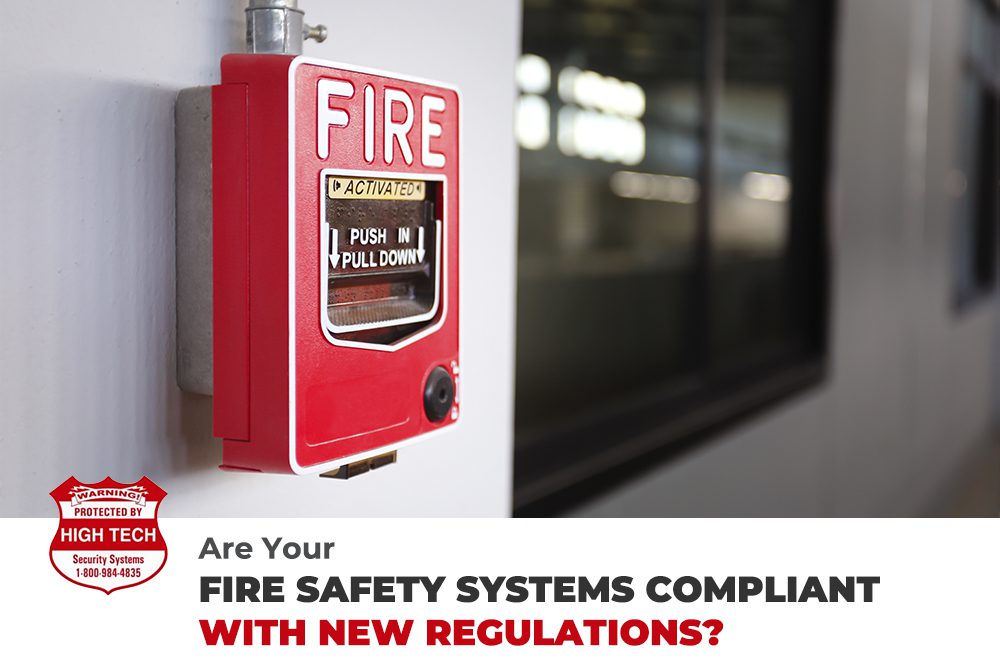Overview: Stay ahead of fire safety regulations with our guide on ensuring your fire safety systems are compliant with the latest standards. Learn about key changes and how to protect your property today!
Fire safety isn’t just about installing alarms and sprinklers; it’s about ensuring that your entire system complies with the latest regulations. Fire codes and safety standards evolve over time to incorporate new technologies, research, and risk factors.
If you own a business or manage a building, you need to ask yourself: Are your fire safety systems up to date?
Why Fire Safety Regulations Change
Fire safety regulations aren’t static. They change due to:
New Technology: With advances in fire detection and suppression technologies, safety standards must evolve to accommodate improved systems.
Incident Lessons: Past fires and their investigations often lead to updated safety codes to prevent similar disasters from happening again.
Building Changes: Renovations or changes in the usage of your building can affect your fire safety needs. For example, a switch from retail to storage might require enhanced fire suppression systems.
What’s Changed in 2024 Fire Safety Regulations?
In Southern California, including Highland, local authorities have aligned with updated national fire safety standards, with specific changes that impact both commercial and residential properties. Here’s what’s new:
Advanced Fire Detection Systems
In 2024, the push towards smart fire safety technology continues. Modern systems now require the installation of multi-sensor fire alarms that can detect smoke, heat, and carbon monoxide, providing faster response times. This is particularly important for businesses in Highland where proximity to wildfire-prone areas demands more sensitive fire detection measures.
Sprinkler System Upgrades
New regulations now require automatic sprinkler systems in buildings previously exempt, such as certain small businesses and residential properties in Redlands, San Bernardino, and Yucaipa. It’s crucial to upgrade your system to meet these new safety requirements.
Energy-Efficient Fire Systems: Fire systems in Southern California are also expected to align with sustainability goals. This means using eco-friendly fire suppression agents and energy-efficient monitoring systems, which reduce both environmental impact and energy costs.
Regular Maintenance and Inspections: Routine inspections and maintenance have become mandatory under the new regulations. Business owners in Highland and surrounding cities like Loma Linda, Riverside, and Colton must ensure fire alarms, extinguishers, and sprinkler systems are inspected at least annually.
>> Related Reading: What’s New in NFPA 101: 2024 Code Updates
What’s New in Fire Safety Regulations?
Improved Fire Detection: Modern fire alarm systems now require more sensitive, multi-sensor detection. This means your outdated smoke detectors might no longer be enough.
Fire Alarm Connectivity: Regulations are increasingly focusing on smart fire alarms that can automatically contact emergency services and provide real-time data about the fire’s location and severity.
Sprinkler System Standards: Some regulations now require automatic fire sprinklers in spaces previously exempt, like small commercial kitchens or specific residential buildings.
Regular Inspections: New rules are emphasizing frequent inspections and maintenance schedules to ensure fire safety equipment is always operational.
Sustainability in Fire Systems: Emerging guidelines are encouraging systems that are energy-efficient and eco-friendly, like using green fire retardants or low-energy monitoring systems.
You might be interested in reading this blog on >> Why Smart Detectors are Essential for a Modern Fire Safety Strategy
That said, it’s important to have a licensed fire safety expert conduct an audit of your property in Highland. They’ll evaluate the age of your system and identify any areas where upgrades are needed.
In Summary
If you wait until an inspection reveals compliance issues, you’re putting your property, employees, and customers at risk. Regular maintenance and staying ahead of fire safety regulations will give you peace of mind and could save lives.
Ask yourself: When was the last time you updated your fire safety systems?


